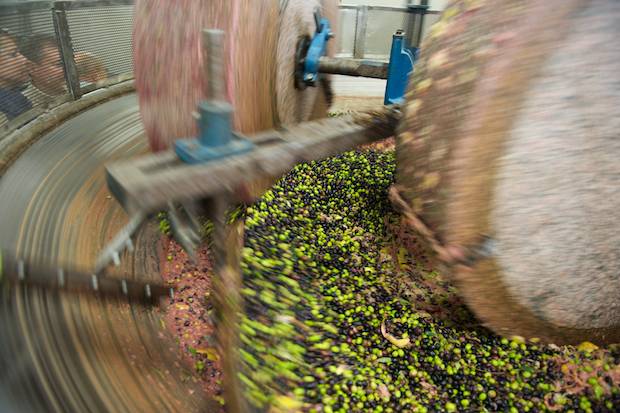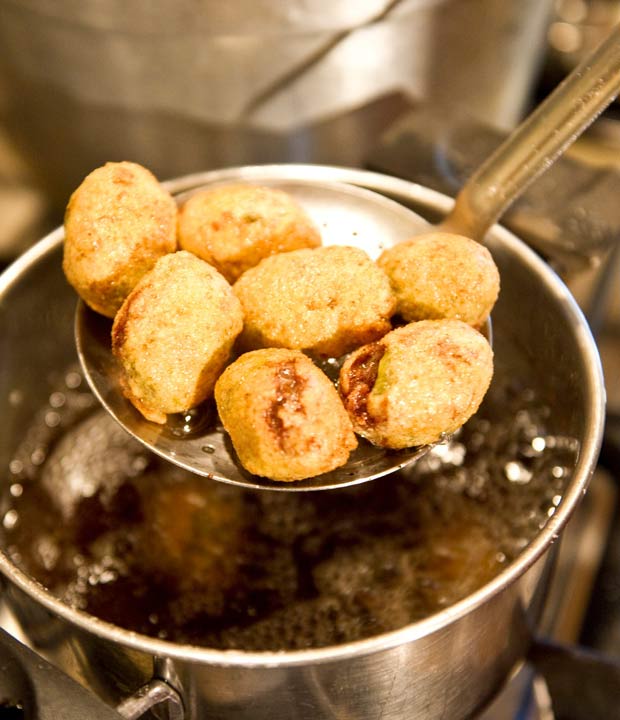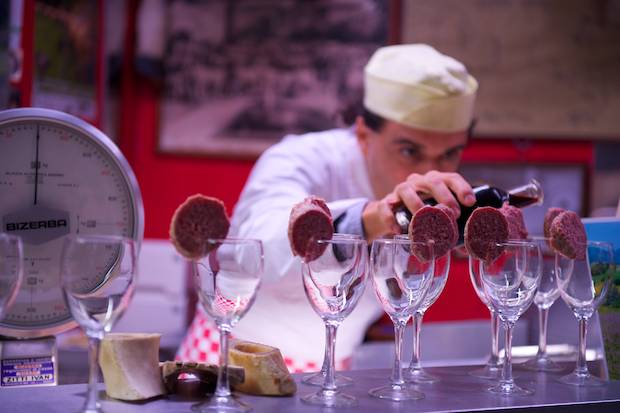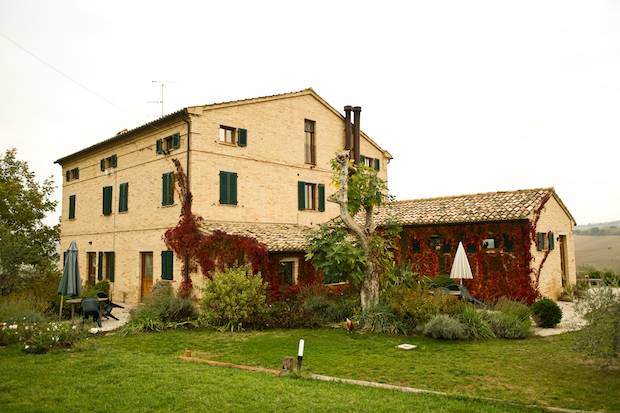Le Marche
A delicious day in the life and land of Nudo’s collaborative community


Since we covered Nudo’s “adopt-an-olive-tree” program a few years back, we’ve been repeatedly impressed by their commitment to bridging the gap between consumers and their food. With a global community of adoptive tree “parents” as well as a localized community of collaborative growers, the Nudo family goes far beyond their fields and presses. It’s a close community as well, with owners traveling to visit their trees and help with the harvest. The farm-to-table connection results in an olive oil that bears the innovative personality of those involved. On a recent visit to Le Marche as the brand’s guest, we met the trees, farmers, and olive millers who define Nudo Italia.

Beginning our day of immersion we left Casal Dei Fichi—our residence for the visit—early for the olive groves. Driving through Le Marche, it’s easy to become hypnotized by the textures of the trees and vines that decorate the landscape like massive bolts of corduroy. We arrived at Rosalio, the Nudo groves, where we picked and raked olives from the branches, which were collected and gathered on nets that ran down the hillside. When asked whether olives could be eaten straight from the tree, Nudo’s founder Jason Gibb explained that fresh olives are extremely bitter and even peppery (I tried one anyway. He was right.). He then told a story about a tree that grew by a cove, its olives falling into the sea. Washed in the seawater over time, the olives were found and enjoyed by a passerby—the reported discovery of brining. Gibb’s story fits with the Rosalio vibe, which is itself a kind of Italian fairy tale.

Leaving the groves by mid-morning, we arrived at the Corradini olive press to make lemon olive oil. Our freshly harvested olives were separated from their twigs and leaves, washed and sent into a basin where three granite wheels pulverized the fruit. Lemons were tossed whole into the mash, which let off a citrus scent of the infusion at work. After an extended cold mixing and going through a series of centrifugal presses, the oil was finally extracted and bottled, ready to be consumed after sitting for a month. This modern pressing process minimizes the olive paste’s exposure to air ensuring optimal freshness and the brightest possible flavor.

Gibb explained that the press charges by weight, so many farmers harvest later in the year when the olives are lighter, having begun to desiccate on the tree. He also notes that older growers prefer the traditional nylon press, which is more of an open-air process that results in an oil that goes rancid more quickly. Tasting oils produced in both the new and old ways I found the difference to be remarkable—olives pressed in the traditional manner had a much more basic, even blurry flavor. Nudo harvests their olives when they are just becoming ripe, paying a higher price to produce a better product.

Lunch came courtesy of Nudo collaborator Paolo Beretta and his wife Paola. The two run an “agriturismo” in Cossignano called Fiorano, where they grow olives for oil and grapes for wine production. Beretta worked most of his career as a dentist—a detail that’s evident in his impeccably maintained groves, vines and wine production facilities. Paola prepared our lunch alongside her mother, who were the keepers of a transcendental stuffed olive recipe that they were kind enough to share with us (see below).


Their “Olive Ascolane” was a delightful appetizer alongside the Fiorano wine. The olives were stuffed, then battered and fried in a mix of the family’s extra virgin olive oil and sunflower oil. The fleshy “tenera ascolana” olives are favored in this rustic dish, which is named for the town of Ascoli Piceno. The piping hot morsels were filled with mortadella and parmesan cheese, as well as minced turkey, beef, and pork.

Our route to dinner in the charming village of Loro Piceno was met with a pleasant interruption at Peppe Cotto, the local butcher. The unrestrained character of Piceno serenaded us with a pigskin trumpet—which complimented his bowtie, also made of pigskin—as he served up vino cotto, or cooked wine, with a wheel of sausage on the rim of the glass.

Before leaving, he found time to give a live performance of a composition that was written on a sheet of dried skin. His fat sculptures were truly mesmerizing, decorating the display case with familiar characters and animals. Of all his eccentric performances, it was the puppet show enacted with the carcass of a chicken that left us reeling on the way out the door.

Visiting this community made the experience of tasting Nudo’s product even more special. As a region with a blossoming agriturismo business, it’s a definite destination to add to any foodie’s vacation wish list. In the mean time, to get a taste for yourself, check out Paola’s mother’s recipe for “Olive Ascolane” after the jump.
Photography by Josh Rubin and Masiar Pasquali
Olive ascolane
Ingredients for 4
“Tenera ascolana” olives
Pork—200g/7oz
Turkey breast—200g/7oz
Beef—200g/7oz
Mortadella—100g/3.5oz
Parmesan—80g/2.8oz
Eggs—4
White wine—1 glass
Nutmeg—to taste
Salt—to taste
Pepper—to taste
Bread crumbs—as required
Flour—as required
Extra virgin olive oil—as required
Sunflower oil—as required
Brown the chopped meat in a pan with a little oil, add salt and pepper and drizzle with white wine. Cover as soon as the wine has boiled away and cook for another 10-15 minutes. Place the cooked meat in an oven dish with the finely chopped Mortadella, the grated Parmesan, nutmeg, salt, a whole egg and a yolk. Mince finely with a chopping knife or with the mixer until smooth and thick. Stone the olives by cutting off the flesh in a spiral—start at the top of the olive and try to cut the flesh off in one piece. Take a piece of meat about the size of the original olive in your hand, roll into a ball and spiral the flesh of one olive around it. Then dip the ball first in the flour, then the beaten eggs and finally the bread crumbs. Do this for all the olives. Heat up the extra virgin olive and sunflower oils until boiling and deep fry the balls until golden brown. Serve hot or warm as a nice starter.












